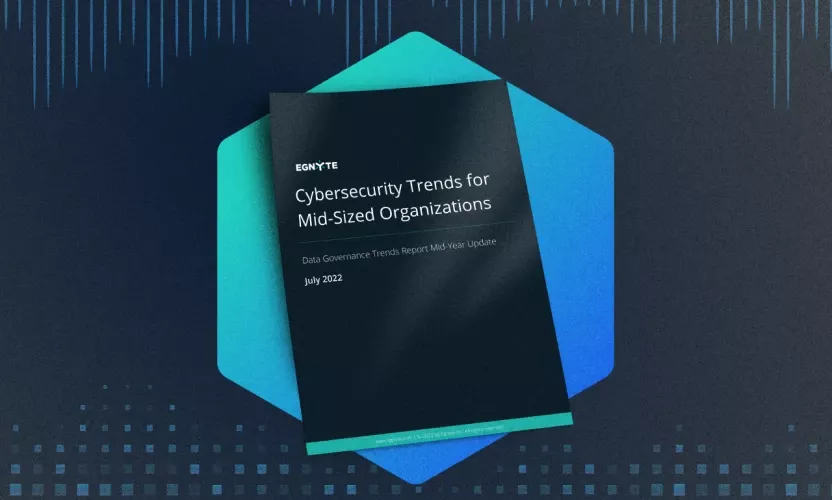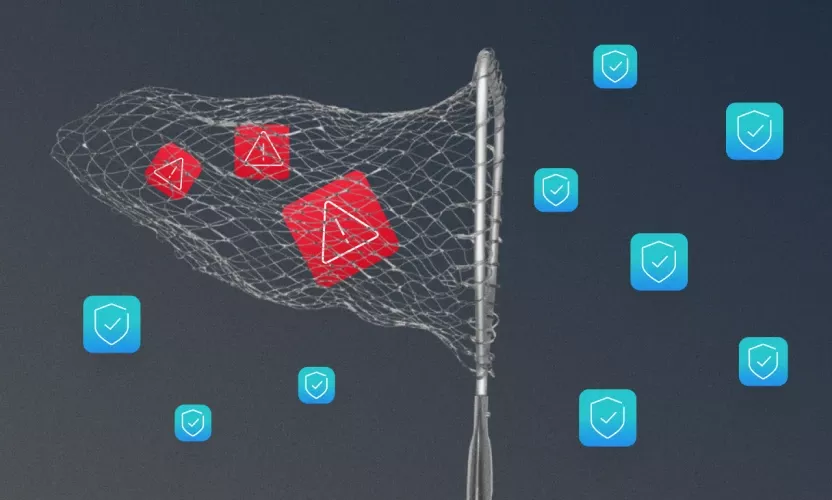
4 Reasons Why SMBs Need To Prioritize Cybersecurity
As a cybersecurity evangelist, I’m constantly exposed to contrasting perspectives on the significance of IT Security projects. Although companies of all shapes and sizes have become more vigilant about cyber protection, it’s fairly commonplace for SMBs to think, ”We’re too small to be of interest to cyberattackers.” Nothing could be further from the truth.
In this blog, you’ll learn why it’s important to prioritize cybersecurity protection, regardless of your company’s size, and find best practices to improve your company’s security protection.
#1: Cyberthreat Volume Just Keeps Growing
CVEs - or Common Vulnerabilities and Exposures - provide a tracking mechanism for information security vulnerabilities. Can you believe that nearly 25,000 CVEs were identified in 2022 alone? That amounts to nearly 70 new vulnerabilities per day and nearly five times the volume of vulnerabilities identified in 2013. The business reality is that most SMBs aren’t highly staffed, making it difficult for them to keep up with such a high volume of vulnerabilities.
Best Practices to Address Growing Cyberattack Volume
With such a growing threat volume, you might be inclined to give up the ship. But, that doesn’t have to be the case. Here are best practices to keep up with increasing cyberattack volume.
- Work with a trusted IT partner: Realistically, it’s difficult for a single SMB to keep pace with rapidly-evolving vulnerability volume. By working with a trusted IT partner, you can benefit from the partner’s expertise across different companies, industries, and even vulnerability types.
- Focus on vulnerabilities that are most likely to impact your infrastructure: If you’re starting from scratch, the best approach is to prioritize action based on the vulnerabilities that are most likely to impact your infrastructure. Do you utilize a mission-critical system or application critical to customer satisfaction and employee productivity? That would be a great place to start!
- Leverage automated IT Security solutions: Combating well-funded cyberattackers with manual solutions will be an unwinnable war for your business. Automated solutions like Egnyte allow you to respond quickly and provide a convenient dashboard to track your risk management progress.
#2: Ransomware Isn’t Going Away Anytime Soon
According to a recent article in Wired, data from cryptocurrency tracing firm Chainalysis reveals that ransomware victims have paid cyberattacker groups $449.1 million in the first six months of 2023. In comparison, during 2022, that figure didn’t even reach $500 million, so you need to be especially vigilant.
Even the U.S. government has stated the following about ransomware:
“All organizations must recognize that no company is safe from being targeted by ransomware, regardless of size or location.”- Anne Neuberger, Deputy National Security Advisor for Cyber & Emerging Technology
Best Practices to Address Ransomware’s Proliferation
These best practices will help you to stay a step ahead of ransomware:
- Assess the business impact of a ransomware attack: As of Q2 2022, the average downtime from a ransomware attack was 24 days - that’s more than three weeks! And, published reports show the average ransomware payment was $228,225 in Q2 2022. Can you afford that level of business disruption for your customers, employees, and business partners, along with the financial outlay?
- Reduce your cyberattack surface: One of the easiest ways to combat ransomware is by tidying up your data and deleting or archiving content your users no longer require. By deleting obsolete information and restricting access to mission-critical data based on “Business Need to Know,” you’ll not only reduce the potential ransomware attack surface but also make access to sensitive content less time-consuming.
- Consider ransomware detection and snapshot recovery solutions: Solutions are now available that permit you to detect ransomware more quickly and to recover from an attack more effectively by restoring files after an attack. You can learn more here.
#3: Brand Reputation Can Be Tarnished by Potential Attacks
According to a Forbes Insights report, a significant 46% of organizations suffered damage to their reputations as a result of data breaches. The 2021 Colonial Pipeline ransomware attack is a classic example - many Americans went from not knowing the company’s name to understanding that its attack prompted long lines at gasoline stations in their states.
Best Practices to Protect Brand Reputation
By following these approaches, you’ll maintain IT Security protection while protecting your brand reputation:
- Invest in cybersecurity to help keep yourself out of the news headlines: Encourage your executive team to consider the total economic impact of a cybersecurity solution - it is an investment in your company’s future protection and could even preserve business productivity down the road.
- Create or update your incident response (IR) plan: One of the simplest ways to prevent reputational damage from cyberattacks is by developing or updating your company’s incident response plan. That way, you’ll discourage press coverage, social media buzz, and customer complaints from driving the recovery narrative, should you experience an attack.
- Remember that effective incident response goes way beyond your IT team: Many organizations make the mistake of relegating their IR plans as one-off IT projects. For IR plans to be successful, they must be supported by executive management and involve stakeholders across the company. Tabletop exercises are also imperative to confirm stakeholders’ roles during an actual incident.
#4: Companies Continue to Balance Work from Home and Work from Office Environments
According to Forbes Advisor, 12.7% of full-time employees worked from home in January 2023, and another 28.2% worked a hybrid model. When combined with the remainder who work in more traditional office settings, most companies face a much larger, more complex attack surface than ever before.
Best Practices for Hybrid Work Environments
- Utilize a cloud-based solution: By adopting a cloud-based solution, you can achieve more consistent IT Security protection across remote, hybrid, and traditional work environments while maintaining company productivity.
- Be vigilant of insider threats: According to research by the SANS Institute, 34% of respondents were targets of property theft or supply chain damage due to insiders who abused their users’ privileges. You can find more best practices related to insider threats here.
- Take suspicious logins seriously: A large proportion of external (and sometimes even internal) cyber-incidents are fueled by remote logins with compromised employee or business partner sign-ons. Egnyte’s Data Governance Test Drive enables you to explore suspicious login prevention capabilities on your own.




